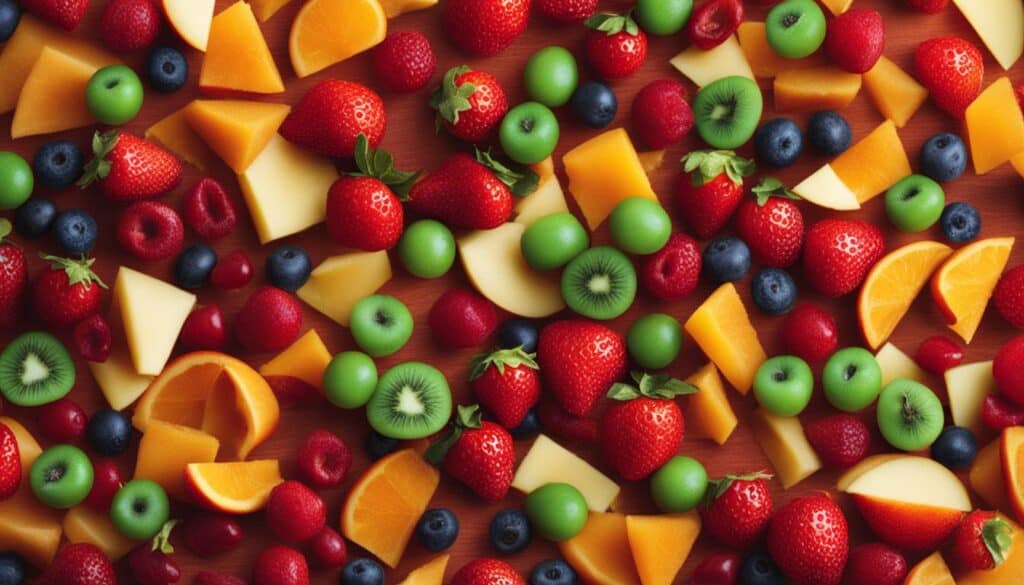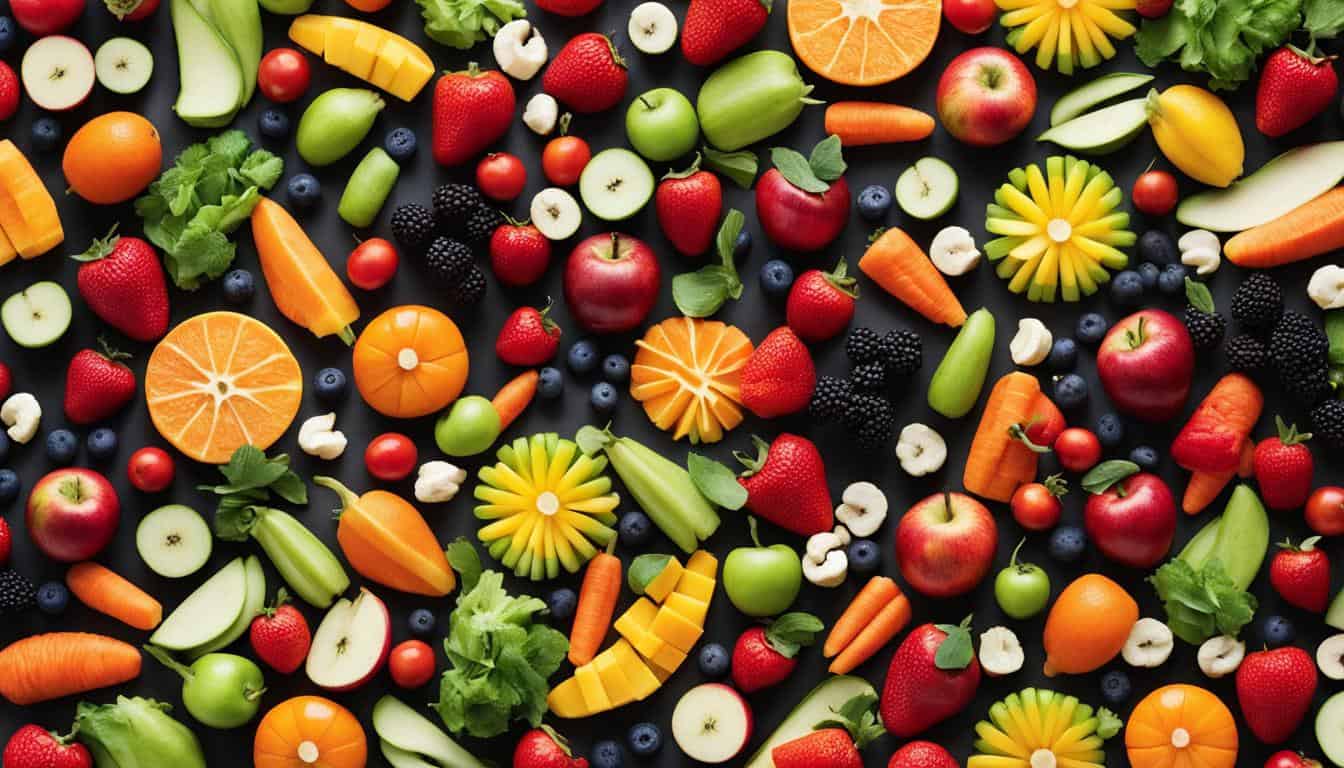The ongoing trend of health consciousness has led to an increase in awareness about healthy food choices, including fruit snacks. Customers are now more mindful of their diet and nutrition, seeking transparency in ingredient lists and nutritional facts. This shift in consumer preferences, along with government initiatives promoting healthy living practices, is creating a favorable market for the fruit snacks industry.
Typical fruit snacks cannot be considered healthy due to the lack of real fruit, high sugar content, and minimal nutritional value. Parents should choose whole fruits or the healthier fruit snack alternatives suggested in some of the search results instead. Treat traditional fruit snacks more like candy or a dessert rather than a nutritious snack.
The emerging healthy living trend in China is also impacting the market, with a focus on low oil, salt, and sugar content in food products. Online retailers are capitalizing on the demand for convenience by offering fruit snacks through their platforms, further contributing to the growth of the market. According to Global Market Insights, the fruit snacks sector is expected to cross the $8 billion mark by 2025.
Key Takeaways:
- Fruit snacks have gained popularity due to the increasing awareness of healthy food choices.
- Consumers are seeking transparency in ingredient lists and nutritional facts.
- The government’s initiatives and the healthy living trend in China are fueling the growth of the fruit snacks market.
- Online retailers are meeting the demand for convenient snacking options.
- The fruit snacks sector is projected to reach $8 billion by 2025.
Increasing Awareness and Demand for Transparency
The increase in health consciousness and the adoption of healthy lifestyles have led to a sharper awareness about diet and nutrition. Consumers are actively looking for healthy snack ideas and are paying more attention to ingredient lists and nutritional facts. This demand for transparency is driving food companies to come out with products that have shorter, more organic, and natural ingredient lists.
The availability of processed food products in supermarkets and the growing penetration of the internet are further influencing consumers’ mindset towards healthy food choices. As a result, the demand for nutritious snacks such as fruit snacks, is expected to grow in the coming years.
| Benefits of Healthy Snacks | Examples of Healthy Snacks |
|---|---|
|
|
Consumer Quotes:
“I’ve become more conscious of what I eat, especially when it comes to snacks for my kids. I want to make sure they’re getting the nutrition they need.”
“Reading the ingredient list and nutritional facts has become a habit for me. I want to know what I’m putting into my body.”
To cater to the increasing demand for healthy snacks, the market is witnessing a surge in healthy snacks for kids that are convenient and appealing. These snacks are not only nutritious but also tasty, making them a hit among children and parents alike.
The shift towards transparency and healthier snack options is a positive trend, as it empowers consumers to make informed choices about their diet and nutrition. With a wider selection of healthy snacks available, individuals can enjoy delicious and healthy snack options that contribute to their overall well-being.
Government Initiatives Promoting Healthy Living
Government organizations are taking proactive steps to promote healthy living practices and educate consumers about the importance of making nutritious dietary choices. These initiatives not only raise awareness about the health risks associated with poor eating habits but also encourage individuals to adopt a healthy lifestyle. By providing information and resources, government campaigns aim to empower individuals to make informed decisions and prioritize their well-being.
“Eat right, feel great! Our government is committed to creating a healthier nation by promoting healthy eating habits. Join the movement and make a positive change in your life.”
One notable initiative is the Change4Life campaign in the United Kingdom, which focuses on educating parents about healthy breakfast foods for their children. By advocating for nutritious choices, this campaign aims to instill healthy eating habits from an early age and set the foundation for a lifetime of healthy choices.
These government efforts go hand in hand with the increasing awareness of the health risks associated with obesity-related diseases. As individuals become more conscious of the impact of their dietary choices on their overall well-being, they are actively seeking out healthier snack options to minimize their risk of developing such conditions.
In response to this growing demand for healthy snack options, the fruit snacks sector is thriving. The popularity of fruit snacks stems from their convenience, nutritional benefits, and variety of options available. Individuals are increasingly turning to fruit snacks as a way to satisfy their cravings while still adhering to their healthy lifestyle goals.
Encouraging Healthy Snacking with Creative Recipes
In support of the healthy eating movement, many government campaigns and organizations also provide creative and delicious snack recipes that are both nutritious and satisfying. These recipes showcase the versatility of healthy ingredients and demonstrate that healthy snacking can be enjoyable.
Here is an example of a simple and tasty fruit snack recipe:
| Recipe | Ingredients | Instructions |
|---|---|---|
| Fruit Kabobs |
|
|
This recipe is not only visually appealing but also provides a good balance of essential vitamins and minerals. By incorporating such recipes into their snack routines, individuals can explore different flavors and textures while still maintaining a healthy eating pattern.
Government initiatives play a crucial role in creating a level playing field for the fruit snacks sector and increasing the accessibility of healthy snack options. By encouraging consumers to be more conscious of their food intake, these initiatives contribute to the growth of the market and support individuals in adopting a healthier lifestyle.
Impact of China’s Emerging Healthy Living Trend

The Chinese government’s dedication to addressing the chronic disease epidemic has resulted in the implementation of new nutritional policies and health initiatives throughout the country. As a consequence, Chinese consumers, especially the younger demographic, have become increasingly mindful of their health when making food and snack choices. This significant shift in preferences has led to a surge in sales of products with low oil, salt, and sugar content, including dairy items like yogurt. The growing popularity of healthier food options in China, including fruit snacks, highlights the immense market potential for the health food segment in the region.
Market Potential of the Health Food Segment in China
| Factors | Impact |
|---|---|
| Growing Health Consciousness | The Chinese population, particularly the younger generation, is increasingly prioritizing their health, leading to a surge in demand for healthier food options. |
| Government Initiatives | The implementation of nutritional policies and health initiatives by the Chinese government is driving the adoption of healthier dietary choices and promoting the growth of the health food segment. |
| Shift towards Low Oil, Salt, and Sugar Content | Consumers are actively seeking food products with reduced oil, salt, and sugar content, creating a lucrative market for healthier snacks, such as fruit snacks. |
| Rise in Yogurt Consumption | The increasing popularity of dairy products, particularly yogurt, as a healthy snack option is contributing to the growth of the health food segment in China. |
The combination of government initiatives, changing consumer preferences, and the focus on food nutrition has paved the way for the rapid expansion of the health food segment in China. As more individuals embrace a healthier lifestyle and prioritize their well-being, the demand for nutritious and convenient snacks like fruit snacks is expected to soar in the country.
Online Retailers Expanding Fruit Snack Market

Online retailers, such as Amazon and Walmart, are taking advantage of the growing popularity of internet shopping and the demand for convenience by expanding their services to include grocery catalogs. This move has opened up new opportunities for online retailers to tap into the fruit snack market, without having to compete for physical shelf space in traditional brick-and-mortar stores.
The increase in online grocery shopping has led to a surge in new revenues for fruit snack manufacturers. With more people turning to the internet for their shopping needs, the accessibility and convenience of online platforms have made it easier than ever for consumers to discover and purchase their favorite fruit snacks.
One of the key advantages of online retailers is the ability to offer a wider range of fruit snack products, including niche and specialty brands that may not be readily available in local stores. This increased variety allows consumers to explore different flavors and options, contributing to the overall growth of the fruit snacks market.
Furthermore, online retailers have also invested in innovative marketing strategies, such as personalized recommendations and targeted advertisements, to showcase fruit snacks to their customers. By leveraging customer data and insights, online retailers can present fruit snacks as a convenient and healthy snacking option, aligning with the growing consumer demand for nutritious food choices.
“The convenience and accessibility of online grocery shopping have transformed the fruit snack market, creating new avenues for growth and revenue generation.”
Online Retailers’ Impact on Fruit Snack Market
| Benefits | Challenges |
|---|---|
| Greater exposure for fruit snack products | Increased competition from other online retailers |
| Expanded product range, including niche and specialty brands | Dependence on shipping and logistics |
| Innovative marketing strategies to target specific consumer segments | Potential customer skepticism about freshness and quality |
| Convenient shopping experience for consumers | Challenges in providing personalized recommendations to diverse customer base |
With the support from consumers, government initiatives promoting healthy living, and the expanding presence of online retailers, the fruit snacks market is projected to continue its growth trajectory. By leveraging the power of e-commerce and capitalizing on the demand for convenient and nutritious snacking options, the fruit snacks industry is on track to exceed $8 billion in value by 2025.
Potential Health Concerns with Packaged Fruit Snacks

Packaged fruit snacks, while convenient and appealing, often contain synthetic food dyes that have raised concerns about potential health risks. These artificial colors, such as Red No. 40 and Yellow No. 5, have been linked to behavioral difficulties in children, including decreased attention spans. Some studies have also found a potential association between these food dyes and inattentiveness and learning difficulties in sensitive individuals. Additionally, certain snacks may contain titanium dioxide, a chemical that is no longer considered safe for consumption by the European Food Safety Authority. Public health advocacy organizations have called for the FDA to reconsider its approval of titanium dioxide in food.
As a consumer, it is important to be aware of the potential health risks associated with synthetic food dyes and artificial food colors in packaged fruit snacks. Considering the long-term effects of these additives on our health is crucial in making informed choices for ourselves and our families.
In some cases, artificial food colors have been linked to adverse reactions, especially in children with existing behavioral conditions. Red No. 40, a commonly used food dye, has been associated with hyperactivity and restless behavior, while Yellow No. 5 has been linked to allergies and asthma in some individuals. These findings have raised concerns among health experts and prompted calls for more regulation and transparency in the food industry.
“The use of synthetic food dyes in our food supply raises serious concerns about the potential health risks. It is important for consumers to be vigilant and knowledgeable about the ingredients in the snacks they consume.”
Additionally, titanium dioxide, a whitening agent commonly found in processed foods and snack products, has been deemed unsafe for consumption by the European Food Safety Authority. The presence of this chemical in certain fruit snacks has raised concerns about its potential long-term health effects. While the FDA currently approves the use of titanium dioxide in food, public health advocacy organizations are calling for a reevaluation of its safety and potential risks.
As consumers, we have the power to make informed choices about the foods we consume. Reading and understanding ingredient labels can help us identify products that contain synthetic food dyes and artificial colors. Opting for naturally colored snacks or those without any artificial additives may be a healthier alternative. By advocating for greater transparency and regulation in the food industry, we can work towards a safer and more health-conscious future for ourselves and our loved ones.
State Legislation and Snack Safety

Due to limited federal action on removing potentially harmful food chemicals, state legislatures are taking steps to ban the use of certain substances in food products. Here in California, we are considering a bill that would prohibit the use of titanium dioxide and Red No. 3, along with other toxic chemicals, in children’s food. Similarly, New York is also considering legislation to ban these chemicals. These state-level initiatives aim to protect consumers, particularly children, from exposure to harmful food additives.
Until regulatory action ensures the safety of snacks, individuals can make informed choices by reading labels and opting for organic snacks that meet stringent USDA standards.
| State | Proposed Legislation |
|---|---|
| California | Banning the use of titanium dioxide and Red No. 3, along with other toxic chemicals, in children’s food. |
| New York | Considering legislation to ban titanium dioxide and Red No. 3, along with other toxic chemicals, in food products. |
By staying informed and advocating for safer food options, we can work towards creating a healthier and more transparent food industry.
The Pros and Cons of Snacking
Snacking can have both positive and negative impacts on nutrition and health outcomes depending on an individual’s snacking behavior. Snacks can provide a boost of energy, curb appetite, and offer additional nutrients when chosen wisely. However, excessive snacking can lead to unwanted weight gain and the potential for meal skipping, which can result in inadequate nutrition.
The key is to make nutrient-dense snack choices, such as raw vegetables, fresh fruit, nuts, and plain yogurt, while being mindful of portion sizes and overall calorie intake. These options not only provide essential vitamins and minerals but also offer fiber and healthy fats that can promote satiety and support overall well-being.
It is important to consider individual snacking motivations, including hunger, social/food culture, emotion, and food insecurity when determining snacking habits. By understanding the reasons behind snacking, individuals can make informed choices that align with their nutritional needs while satisfying their cravings and addressing emotional aspects of eating.
Here are some benefits and drawbacks of snacking:
- Benefits:
- Provides a quick energy boost
- Curbs hunger between meals
- Offers an opportunity to incorporate additional nutrients into the diet
- Supports a more balanced and varied eating pattern
- Drawbacks:
- Potential for weight gain if portion sizes and calorie intake are not controlled
- Risk of consuming unhealthy snacks high in added sugars, unhealthy fats, or artificial ingredients
- Possible interference with regular meal consumption, leading to inadequate nutritional intake
It is essential to strike a balance when it comes to snacking. Here are some tips to help make snacking a healthy and enjoyable part of your lifestyle:
- Choose nutrient-dense snacks that provide essential vitamins, minerals, and other beneficial nutrients.
- Control portion sizes to prevent excessive calorie intake.
- Listen to your body’s hunger and fullness cues to determine when and how much to snack.
- Limit consumption of processed snacks high in added sugars, unhealthy fats, and artificial ingredients.
- Consider the role of emotions and social factors in your snacking habits and seek healthier alternatives to address these aspects.
- Keep a variety of healthy snack options readily available to avoid reaching for less nutritious choices out of convenience.
By adopting these practices, you can enjoy the benefits of snacking while maintaining a balanced diet and supporting your overall health and well-being.
Conclusion
In conclusion, the increasing demand for fruit snacks illustrates the growing awareness of consumers about making healthy food choices. As individuals adopt healthier lifestyles and governments implement initiatives promoting healthy living, the market for fruit snacks continues to expand. However, it is important to be mindful of potential health risks associated with packaged fruit snacks that may contain synthetic food dyes and titanium dioxide.
To address these concerns, state legislatures are proposing measures to protect consumers, especially children, from harmful food additives. It is crucial for individuals to stay informed and read labels when choosing fruit snacks. Opting for nutrient-dense options and controlling portion sizes can make snacking a part of a healthy diet.
By making conscious decisions about what we consume, we can enjoy the convenience and taste of fruit snacks while supporting a healthy lifestyle. With an emphasis on well-being and a focus on quality ingredients, fruit snacks provide a satisfying and nutritious snacking option for individuals looking for a balanced approach to healthy snacking.
FAQ
Are fruit snacks healthy?
Fruit snacks can be a healthy snack option, especially when made from real fruits without added sugars or artificial ingredients. It’s important to check the ingredient list and choose options that are 100% fruit or made with whole fruit puree.
What are some healthy snack ideas for kids?
Some healthy snack ideas for kids include fresh fruits and vegetables, nuts and seeds, yogurt, whole grain crackers or bread, and homemade trail mix. These snacks provide important nutrients and can be delicious and satisfying for kids.
How can I make healthier snack choices?
When making snack choices, it’s important to read the ingredient lists and nutritional facts of the products. Choose snacks that are low in added sugars, artificial ingredients, and unhealthy fats. Opt for whole food snacks like fruits, vegetables, nuts, and yogurt.
What government initiatives are promoting healthy living?
Government initiatives are focusing on promoting healthy living practices through campaigns and education. These initiatives aim to raise awareness about the importance of a nutritious diet and encourage individuals to make healthier food choices.
How is China’s emerging healthy living trend impacting the market?
China’s emerging healthy living trend is influencing the food market by increasing the demand for low oil, salt, and sugar content in food products. This trend is creating opportunities for healthy snack options, including fruit snacks, in the region.
How are online retailers expanding the fruit snack market?
Online retailers are capitalizing on the demand for convenience by offering fruit snacks through their platforms. This expansion provides greater exposure for fruit snack products and contributes to the growth of the market.
What are the potential health concerns with packaged fruit snacks?
Packaged fruit snacks may contain synthetic food dyes and artificial colors, which have raised concerns about potential health risks. Additionally, certain snacks may contain substances like titanium dioxide, which is no longer considered safe for consumption by some authorities.
What is being done about snack safety and harmful food chemicals?
State legislatures are taking steps to ban the use of certain chemicals in food products, including harmful food additives. These initiatives aim to protect consumers, especially children, from exposure to potentially harmful substances in snacks and other food products.
What are the pros and cons of snacking?
Snacking can provide a boost of energy, curb appetite, and offer additional nutrients when nutrient-dense options are chosen. However, excessive snacking can lead to unwanted weight gain and the potential for inadequate nutrition if unhealthy choices are made. It’s important to be mindful of portion sizes and choose snacks wisely.
What is the conclusion about fruit snacks and healthy snacking?
Fruit snacks can be a healthy snack option when made from real fruits without added sugars or artificial ingredients. It’s important to choose snacks that provide important nutrients and avoid options that contain excessive sugars, unhealthy fats, or artificial additives.





Leave a Reply